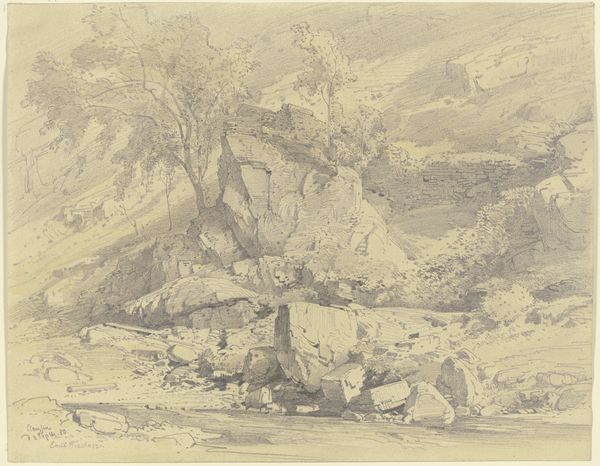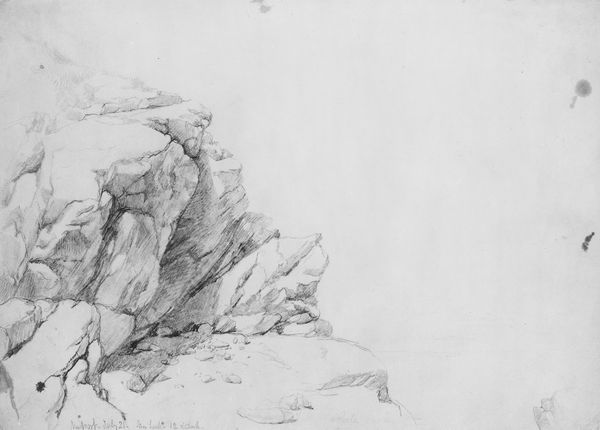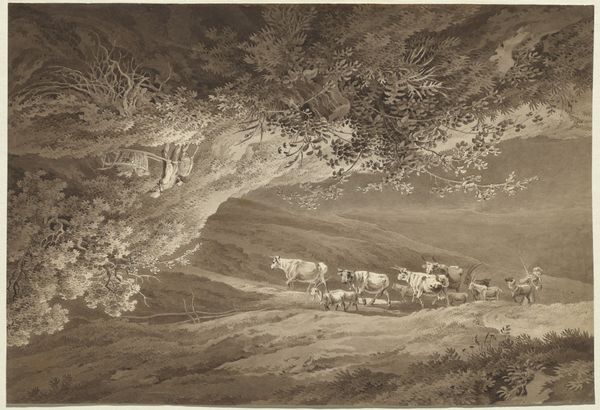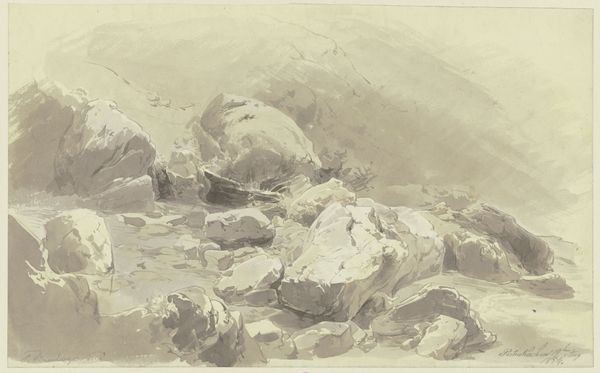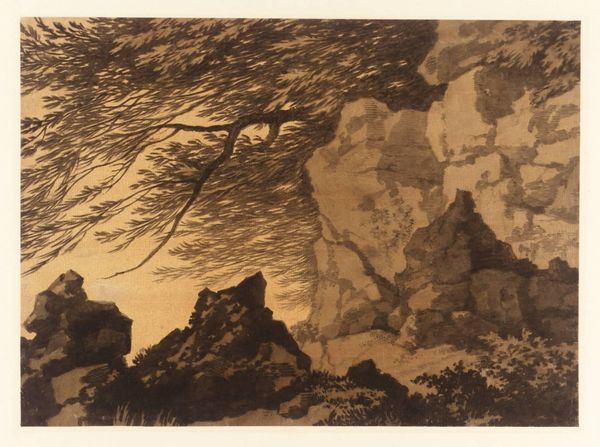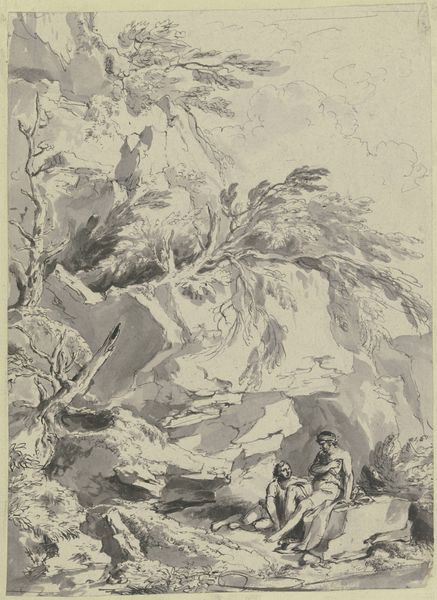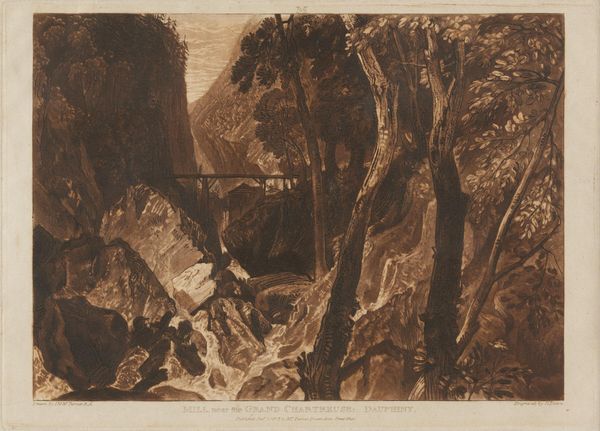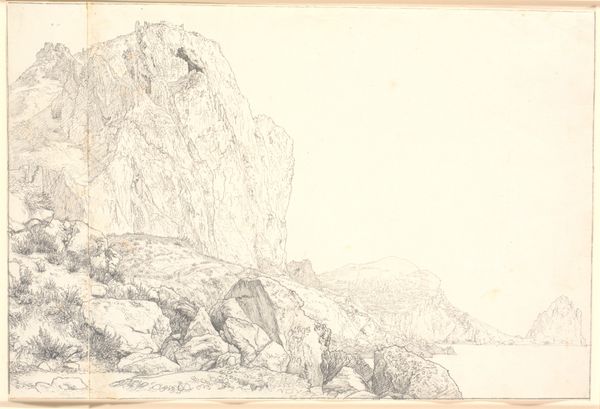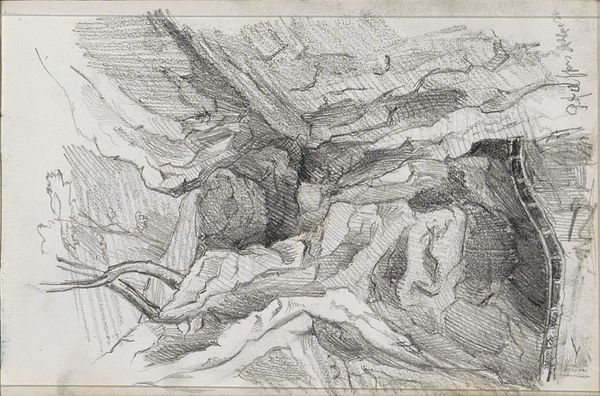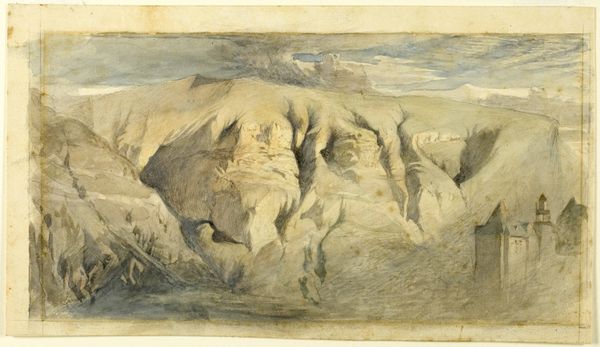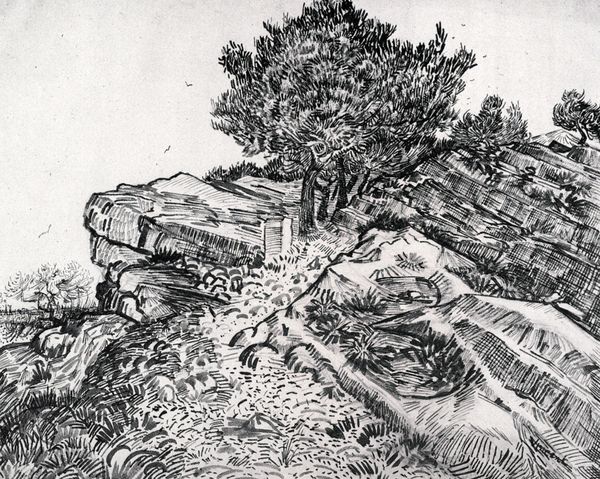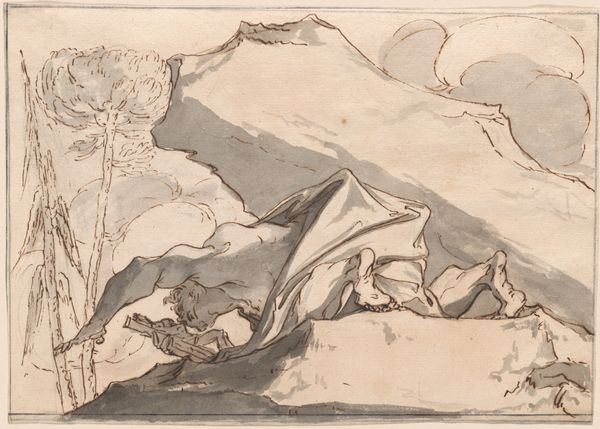
Rocky Landscape with Pan Playing His Flute (In the Park of the Villa Chigi, Ariccia) 1808
0:00
0:00
drawing, print, paper, ink, pen
#
drawing
#
organic
# print
#
organic shape
#
landscape
#
classical-realism
#
charcoal drawing
#
paper
#
ink
#
romanticism
#
water
#
pen
Dimensions: 443 × 587 mm (sheet); 577 × 725 mm (max. mount)
Copyright: Public Domain
Curator: Johann Christian Reinhart, a German painter who spent much of his career in Italy, created this pen, ink, and charcoal drawing on paper entitled "Rocky Landscape with Pan Playing His Flute (In the Park of the Villa Chigi, Ariccia)" in 1808. Editor: My initial impression is that of a quiet, melancholic scene. The sepia tones create a sense of aged serenity, a removed observation point. Curator: The location itself, the park of Villa Chigi, carries weight. Aristocratic patronage, idealized landscapes, and a specific leisure class enjoying nature became markers of social standing. Note how Reinhart inserts Pan, a figure deeply connected to the land, disrupting, in a way, this established order. He’s not just a pastoral figure, but a god, embodying primal forces. Editor: And look at the intense details—the layered rocks, complex root systems. The execution is superb, highlighting the intensive labor involved in creating this imagined Arcadia. It’s interesting to consider how these materials--pen, ink, charcoal-- were transformed through labor into something intended to evoke leisurely contemplation. Curator: Exactly, the labor and skill required contribute to the aesthetic experience. Further, placing Pan so discreetly asks us to consider what's civilized and what’s wild. Where does that boundary exist? Especially given the patron context of the artwork. Were similar class related structures implied, too, by the way the real-world Ariccia villa, in Italy, relied upon materials extracted via labor and resources? Editor: The classical ruins became sites of excavation and of looting for aristocrats during this period. It’s as if this highly cultivated naturalism romanticizes and attempts to obscure those colonial realities, which became, in some cases, actual literal building blocks for the villas being built at this time, like this Ariccia estate! Curator: Yes, romanticism's interest in ruins and nature can overshadow the labor required to facilitate the experience. It shows a clear political dimension concerning nature and civilization and their related exploitation. Editor: Reinhart's landscape offers us insight not just into Romantic aesthetics, but into the social and material relationships shaping that world, demanding more from us, today. Curator: A call to reflect on the roles we play, in our world. And in whose reality and service? Thank you for such insights.
Comments
No comments
Be the first to comment and join the conversation on the ultimate creative platform.
